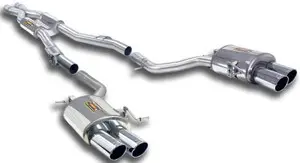
How to determine low tire pressure and what to do if it drops
Content
Low tire pressure can be one of the most frustrating things for a car owner. This can be a small but inconvenient task during your busy day. But more importantly, low tire pressure affects your car's performance and even safety. Especially as the weather gets colder, low tire pressure is an increasingly common problem.
Watch out for any signs of low tire pressure this winter season and act quickly to fix it. If you don't, it will cost you pump money, future repairs, and possibly a blown tire. The Performance Muffler offers signs of low tire pressure and what you should do when it drops.
Warning from your tire pressure monitoring system
Virtually every car on the road (if made after the 1980s) is equipped with a tire pressure monitoring system (TPMS). Like your regular check engine light or oil pressure indicator, your tire pressure monitoring system warns you when your vehicle's tire pressure is too low. The recommended psi (psi) pressure for a car tire is between 32 and 35 psi, but the warning light will not usually come on until it falls below 30 psi. This is of course the most common way to spot low tire pressure, and like all of your car's warning lights, don't ignore it when it appears.
Steering problems
If the tire pressure gets too low, it will start to affect the performance of your vehicle, especially its steering. While cornering or manoeuvring, you may notice that your car wobbles, slows down, or generally feels out of place. This could be a clear sign of low tire pressure. As soon as you can safely stop the car, get out and inspect the car to check if the tires are properly inflated.
popping noise
Squishing or rattling while driving can be a bad sign that your tire pressure has dropped significantly. This noise may indicate that tire pressure is almost dangerously low. This affects the performance and safety of your vehicle. Stop as soon as possible and assess whether it is safe to continue driving and try to get to the air compressor quickly.
Worst stopping distance
Another sign of low tire pressure is that it takes your car a long time to come to a complete stop. Tires with low pressure don't work as efficiently, so your vehicle's stopping distance increases. If you think this is happening to your vehicle, check the air level in each tire when you can safely do so.
Quick Tips for Resolving Low Tire Pressure
When dealing with low tire pressure, there are two things you need to have in your car that will make a huge difference: tire pressure sensor и portable air compressor. A tire pressure gauge will let you check your tire pressure when you need it if your car doesn't already have a dashboard to show you that.
A portable air compressor will allow you to inflate your tires anytime you are away from a gas station or repair shop. You can stop, connect the compressor to the cigarette lighter, set the desired PSI level and conveniently inflate the tires. This device can also save you money by eliminating trips to gas station air compressors. This is a smart investment.
Do not drive with low tire pressure
Driving with properly inflated tires will keep your vehicle running for a long time. Winter can be especially hard on your car, so be smart and active to keep your car in top shape.
If you also want to service your vehicle to improve its performance, Performance Muffler can help you with a range of custom exhaust services. We can repair your exhaust, muffler, catalytic converter or even modify your car with exhaust tips, dual exhaust or more.
Contact Performance Muffler Today
If you want to optimize your vehicle, feel free to contact the Performance Muffler experts. Find out why we've been the best exhaust system shop in Phoenix since 2007.

